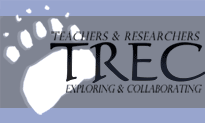 |
|
|
| Author |
Message |
Scott_McComb
Joined: 23 Mar 2004
Posts: 38
Location: Fort Hayes Metropolitan Education Center

|
 Posted:
Thu Jun 24, 2004 12:59 am Posted:
Thu Jun 24, 2004 12:59 am |
  |
We have only five days left and three experiments left to run; time is flying by!
Earlier this morning, Trevor (yet another extremely helpful Toolik Field Station staff member) created a “lake reactor”, a fancy name for milk crate with a wooden frame built around the edge to accommodate thin metal poles, over which we slid a metal plate. A picture will be included in tomorrow’s post.
This afternoon, Amanda, Penney and I put the lake reactor into the lake in preparation for tomorrow’s work.

I reiterate: there’s no such thing as bad weather, only inappropriate clothing. Here the “inappropriate” part of Penney’s and Amanda’s outfit is the lack of bug jackets.

Meanwhile, mosquitoes did not bite me because either (a) I didn’t shower this morning (b) I am sometimes very fierce (see above) or (c) I was wearing a bug jacket.
In our experiments so far, we have been investigating how pollution breaks down in the presence of sunlight and organic matter. In tomorrow’s experiment, we hope to add another variable: how does pollution break down in the presence of sunlight and organic matter when the pollution is under Arctic waters? (There’s a lot of surface water in the Arctic, nearly all from precipitation. Since precipitation is one of the main vehicles for pollution to get to the Arctic, surface waters are the most likely storehouses of pollution. What happens to the pollution in the water? No one really knows…. yet.)
I’ve said earlier that water does NOT stop ultraviolet radiation (thus, it’s possible to get sunburned playing in a pool or in the ocean). However, organic matter dissolved in the water CAN absorb ultraviolet radiation. Because it absorbs the ultraviolet light, we suspect that it will make the pollution break down more slowly (or much more slowly… or much much more slowly… or much much much more slowly). The more organic matter in the water, the slower the pollution will degrade; think sunglasses for pollution.

Or that’s the hypothesis anyhow. We’ll see.
The experiment requires a level, underwater surface. Leveling the metal plate was tricky, made trickier by the swarms of mosquitoes. But, I got to wear waders and play in the water (which was an extremely comfortable temperature). Could my life be better?
Yes, actually… but not by much. I could be invited to talk with the scientists at Toolik about TREC. Oh, wait. I was. I did. Just this evening in fact. My life could not be better (or at least not by very much… I am starting to miss home).
Last week, Penney and Amanda were asked to present at “Toolik Talking Shop”, a weekly, hour-long seminar in which scientists from various fields outline their work and emphasize its importance. It is a great opportunity for scientists to interact with each other and to learn about each others’ work. Penney and Amanda were gracious enough to allow me 15 minutes of their time (more points for them!). I used the time to outline the TREC program and the importance of involving education and outreach in research. The gist: researchers need to come out of their ivory towers, teachers need research experience to better understand the research process, and students need to be involved research of their own. Programs like TREC can make it happen.

For those interested (and even for those who aren’t), a copy can be found at the following URL:
http://archive.arcus.org/TREC/McComb/Toolik_Lake_scientists.ppt
Following my talk, Penney and Amanda provided a very funny and very clear overview of their project (important for the many non-chemists in the audience)

A couple other details:
Food truck arrived today!

Feeding the entire camp takes a lot of food and is unloaded with multiple trips from a giant forklift. The food truck comes twice a week.
As I stumbled off to bed, the wind had sighed its last breath. Toolik’s loons called to each other across the mirrored lake.

Clouds in the north cast long shadows on the gold and pink Brooks Range.

Life is STILL good. |
_________________
~Scott |
|
    |
 |
|
|
|
View next topic
View previous topic
You cannot post new topics in this forum
You cannot reply to topics in this forum
You cannot edit your posts in this forum
You cannot delete your posts in this forum
You cannot vote in polls in this forum
You cannot attach files in this forum
You can download files in this forum
|
Powered by phpBB 2.0.11
© 2001, 2002 phpBB Group :: FI Theme ::
All times are GMT
| |
